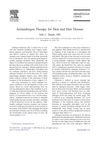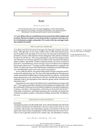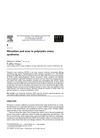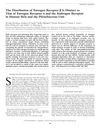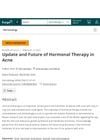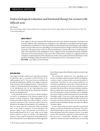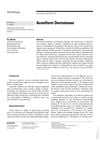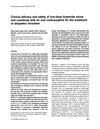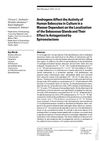Pharmacologic Modulation of Sebaceous Gland Activity: Mechanisms and Clinical Applications
April 2007
in “
Dermatologic Clinics
”
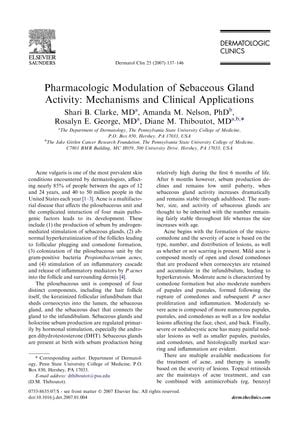
TLDR The document concludes that new treatments are needed to better manage acne and reduce side effects related to current therapies.
The 2007 document reviews the pharmacological interventions for modulating sebaceous gland activity, particularly in the treatment of acne vulgaris. It focuses on isotretinoin, a synthetic vitamin A analog, which significantly reduces sebum production by up to 90%, shrinks sebaceous glands, and inhibits the growth of Propionibacterium acnes and inflammation. Isotretinoin's mechanism is not fully understood, but it affects various cellular processes and is typically prescribed at 0.5-1.0 mg/kg per day, with low-dose regimens also proving effective. Side effects are dose-dependent and reversible, with cheilitis being the most common. The document also addresses concerns about depression and suicide risk with isotretinoin, noting that the risk does not seem higher than in the general population, although the high teratogenic risk led to the implementation of the iPLEDGE program. Hormonal therapies, particularly those targeting androgens, are also discussed as important in treating acne, hirsutism, and androgenic alopecia, with noted side effects such as menstrual irregularities and potential liver issues. Oral contraceptives approved for acne treatment in the U.S. are listed, including those combining ethinyl estradiol with different progestins. The document concludes with a call for novel therapies to better treat acne and reduce side effects, given the complex nature of sebaceous gland functioning.
